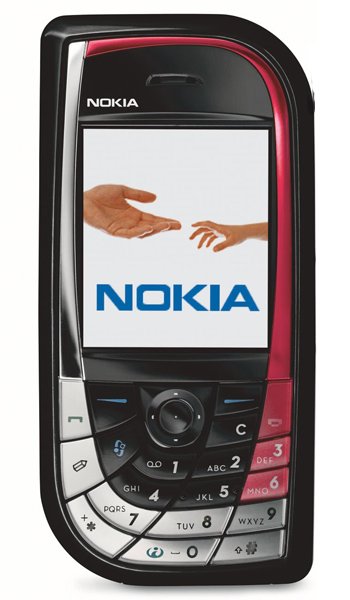Nokia 7610 vs Huawei P60 Pro Comparison and Differences
Smartphone 1

Nokia 7610
Smartphone 2

Huawei P60 Pro
Smartphone 3
Nokia 7610 or Huawei P60 Pro Specs Comparison
or
 Common specs
Common specs
| Brand and model | Nokia 7610 | Huawei P60 Pro | |
| Rating | (+) | (+) | |
| Release date | 2004, March | 2023, March 23 | |
| Dimensions (HxWxD) | 109 x 53 x 19 mm | 4.29 x 4.29 x 2.09 in | 161 x 74.5 x 8.3 mm | 6.34 x 6.34 x 2.93 in | |
| Weight | 118 g | 4.16 oz | 200 g | 7.05 oz | |
| Body Build | Glass front, glass back, aluminum frame | ||
| Case | buy from Amazon | buy from Amazon | |
| Colors | Ruby and Onyx | Black, Green, Violet, Rococo Pearl | |
| Battery | 900 mAh, Removable Li-Ion | 4815 mAh, Li-Po, non-removable | |
| Battery life |
Stand by time - Up to 250 h Talking time - Up to 3 h |
||
| Approximate price | 1200 EUR | ||
| Check price | from Amazon | from Amazon |
 Screen
Screen
| Technology | TFT | LTPO OLED | |
| Touchscreen | capacitive touchscreen | ||
| Display colors | 65K | 1B | |
| Screen size | 2.1" in | 6.67" in | |
| Screen area | 14.0 cm2 | 107.7 cm2 | |
| Screen format | |||
| Screen to body ratio | 24.3% | 89.8% | |
| Screen resolution | 176 x 208 px | 1220 x 2700 px | |
| Screen PPI /points per inch/ | 0 PPI | 444 PPI | |
| Screen protection | Kunlun Glass | ||
| Other specs | - 120Hz | ||
| Screen protector | buy from Amazon | buy from Amazon |
 Camera and Video
Camera and Video
| Rear camera, main | 1 MP, Single | 48 MP, Triple | |
| Camera specs | -1 MP | -48 MP, f/1.4-f/4.0, 25mm (wide), PDAF, Laser AF, OIS -48 MP, f/2.1, 90mm (telephoto), PDAF, sensor-shift OIS, 3.5x optical zoom -13 MP, f/2.2, 13mm (ultrawide), AF |
|
| Functions | LED flash, HDR, panorama | ||
| Video | Yes | 4K@30/60fps, 1080p@30/60fps, 1080p@960fps; gyro-EIS | |
| DxOMark Main Score | 156 | ||
| DxOMark Photo | 159 | ||
| DxOMark Video | 158 | ||
| Front camera, selfie | 0 MP, | 13 MP, Single | |
| Specifications | 13 MP, f/2.4, (ultrawide) | ||
| Functions | Panorama, HDR | ||
| Video | 4K@30/60fps, 1080p@30fps |
 Performance
Performance
| Operating system - OS | Symbian 7.0s, Series 60 v2.0 UI | HarmonyOS 3.1 (China), EMUI 13.1 (Europe), no Google Play Services | |
| Chipset | - TI OMAP 1510 | - Qualcomm SM8475 Snapdragon 8+ Gen 1 4G (4 nm) | |
| CPU | - 123 MHz ARM925T | - Octa-core (1x3.19 GHz Cortex-X2 & 3x2.75 GHz Cortex-A710 & 4x2.0 GHz Cortex-A510) | |
| GPU | Adreno 730 | ||
| External memory | RS-MMC, 64 MB included | NM (Nano Memory), up to 256GB (uses shared SIM slot) | |
| Internal memory | 8 MB | 256GB 8GB RAM, 512GB 12GB RAM |
 Benchmark
Benchmark
| Antutu 10 Total | 1255640 | ||
| Antutu 10 CPU | 355754 | ||
| Antutu 10 GPU | 475334 | ||
| Antutu 10 Mem | 193704 | ||
| Antutu 10 UX | 355754 | ||
| Antutu 9 Total | 989546 | ||
| GeekBench 5 Single Core | 1376 | ||
| GeekBench 5 Multi-Core | 4511 |
 Communication and Connectivity
Communication and Connectivity
| SIM card | Mini-SIM | Single SIM (Nano-SIM)Hybrid Dual SIM (Nano-SIM, dual stand-by) | |
| Network | GSM | GSM / CDMA / HSPA / CDMA2000 / LTE | |
| Bands | -2G - GSM 850 / 900 / 1800 / 1900 - SIM 1 & SIM 2 (dual-SIM) CDMA 800 -3G - HSDPA 800 / 850 / 900 / 1700(AWS) / 1900 / 2100 CDMA2000 1x -4G - LTE |
||
| Speed | HSPA, LTE-A | ||
| GPRS | Class 6 | Yes | |
| Edge | No | Yes | |
| Wi-Fi | No | Wi-Fi 802.11 a/b/g/n/ac/6, dual-band, Wi-Fi Direct | |
| GPS | No | GPS (L1+L5), GLONASS (B1I+B1c+B2a), BDS (B1I+B1c+B2a), GALILEO (E1+E5a), QZSS (L1+L5), NavIC | |
| NFC | Yes; NFC-SIM, HCE | ||
| USB | Pop-Port | USB Type-C 3.1, OTG | |
| Bluetooth | 1.1 | 5.2, A2DP, LE | |
| Harmful irradiation |
SAR - 0.90 W/kg (head) 0.88 W/kg (body) SAR EU - 0.49 W/kg (head) |
 Music and Audio
Music and Audio
| Radio | No | No | |
| Headphone jack | No | No | |
| Others | - 2.5 mm audio jack |
 Other features
Other features
| Sensors | - Fingerprint (under display, optical), accelerometer, gyro, proximity, compass, color spectrum , Infrared port | ||
| Other extras |
- MP3/AAC player -Predictive text input -Organizer -Voice command/memo -Xpress-on Style Packs |
- BDS Satellite Message - Fast charging 88W -Wireless charging 50W -Reverse wireless charging - IP68 dust/water resistant (up to 1.5m for 30 min) |
Reviews and Opinions on Nokia 7610 and Huawei P60 Pro
If you had to recommend one of these phones to a friend, which one would it be and why? Share your arguments using the Add Opinion button!
